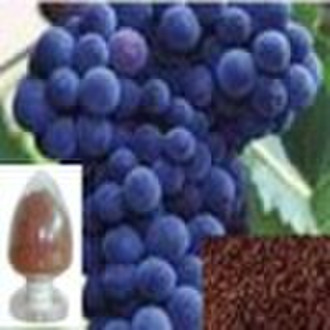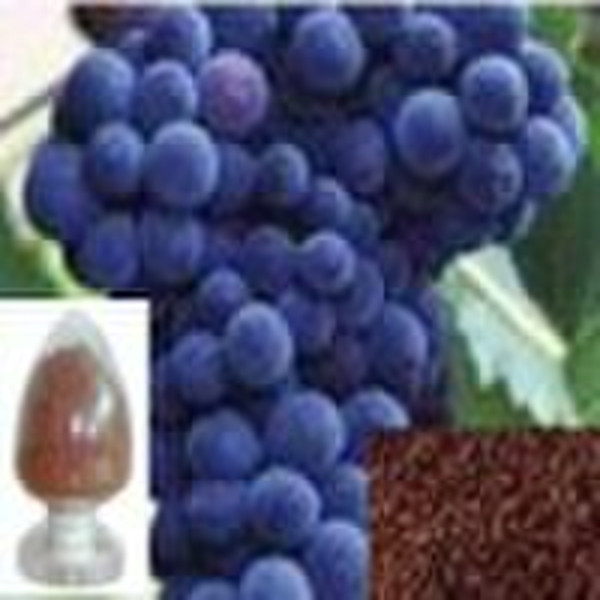Catalog
-
Catalog
- Agriculture
- Apparel
- Automobiles & Motorcycles
- Beauty & Personal Care
- Business Services
- Chemicals
- Construction & Real Estate
- Consumer Electronics
- Electrical Equipment & Supplies
- Electronic Components & Supplies
- Energy
- Environment
- Excess Inventory
- Fashion Accessories
- Food & Beverage
- Furniture
- Gifts & Crafts
- Hardware
- Health & Medical
- Home & Garden
- Home Appliances
- Lights & Lighting
- Luggage, Bags & Cases
- Machinery, Hardware & Tools
- Measurement & Analysis Instruments
- Mechanical Parts & Fabrication Services
- Minerals & Metallurgy
- Office & School Supplies
- Packaging & Printing
- Rubber & Plastics
- Security & Protection
- Service Equipment
- Shoes & Accessories
- Sports & Entertainment
- Telecommunications
- Textiles & Leather Products
- Timepieces, Jewelry, Eyewear
- Tools
- Toys & Hobbies
- Transportation
Filters
Search
Grape Seed Extract / Proantocyanidins(OPC)95%

Andrew Chow
Contact person
Basic Information
| Packaging | Bottle |
|---|---|
| Place of Origin | Hunan China (Mainland) |
| Grade | Cosmetics GradeFood addtive |
| Brand Name | Goldliloo |
| Model Number | GL-P-8013 |
| Type | Herbal Extract |
| Form | Powder |
| Part | Seed |
| Extraction Type | Solvent Extraction |
Product Specifications: 95% Proantocyanidins(OPC) UV-VIS, 90% Polyphenols UV-VIS Goldliloo’s Grape Seed Extract Features and Benefits: Grape Seed Extract is one of Goldliloo's most competitive products, with many advantages as list in the following, produced as our patent-pending process and know-how technology from Vitis vinifera seeds. Produced with pure water only High purity: over 95% NO solvent - residual free Pesticide-free Red-brown in appearance High solubility in water High anti-bacteria, and longer shelf life Product NameGrape Seed ExtractLatin NameVitis vinifera L.Plant part usedSeedActive IngredientProantocyanidins(OPC), Polyphenols UV-VISSpecification95% Proantocyanidins(OPC) UV-VIS, 90% Polyphenols UV-VISTest MethodUV-VISCase No29106-51-2Main FunctionAnti-oxidant, anti-cancerBrief Introduction Synonyms--- Proanthocyanidin B4 Proanthocyanidin B4 is a B type proanthocyanidin.Proanthocyanidin-B4 is a catechin-(4α→8)-epicatechin dimer. It is found in the litchi pericarp, in grape seeds, and, along with 4-cis-isomer of procyanidin B4, in beer. Chemical Name: CAS Number: 29106-51-2 Molecular Formula: C30H26O12 Mol. Wt.: 578.52 Molecular Structure: Vitis vinifera (Common Grape Vine) is a species of Vitis, native to the Mediterranean region, central Europe, and southwestern Asia, from Morocco and Spain north to southern Germany and east to northern Iran. It is a liana growing to 35 m tall, with flaky bark. The leaves are alternate, palmately lobed, 5–20 cm long and broad. The fruit is a berry, known as a grape; in the wild species it is 6 mm diameter and ripens dark purple to blackish with a pale wax bloom; in cultivated plants it is usually much larger, up to 3 cm long, and can be green, red, or purple. The species typically occurs in humid forests and streamsides. The Grape Seed Extract used in dietary supplements is derived from the seeds of the plant grape(Vitis vinifera L.). Benefits• Anti-oxidant activity • Anticarcinogenic activity (Anti-cancer) • Anti-imflamatory and antimicrobial • Vasodilatory Properties Mechanism OPCs possess antioxidant, antimutagenic, anticarcinogenic, anti-inflammatory, and antiviral properties. Antioxidant The potent antioxidative properties of OPCs account for their therapeutic benefit in disease states characterized by oxidative stress. OPCs also demonstrate potent, concentration-dependent, free radical scavenging ability. (9) Studies in mice show OPCs inhibit chemically-induced lipid peroxidation, DNA fragmentation, and subsequent apoptosis (indicators of oxidative tissue damage) in a dose-dependent manner in hepatic and brain tissue. (10) Human studies also demonstrate an antioxidative mechanism as evidenced by decreased lipid peroxidation of LDL cholesterol (11,12) and increased free-radical trapping capacity after consumption of red wine containing OPCs. (7) OPCs appear to have an affinity for vascular tissue and strongly inhibit several enzymes involved in degradation of collagen, elastin, and hyaluronic acid, the main structural components of the extravascular matrix. (13) These effects are perhaps attributable to trapping reactive oxygen species and preventing oxidative injury to vascular endothelium. In vitro studies have also found OPCs increase resistance of cell membranes to injury and degradation. (14,15) Anti-inflammatory OPCs from pine bark decrease symptoms of chronic inflammation. In vitro studies demonstrate anti-inflammatory effects may be due to inhibition of peroxide generation by macrophages. (25,26) In addition, animal studies demonstrate OPCs from grape seed significantly inhibit formation of proinflammatory cytokines, interleukin 1-beta, and tumor necrosis factor-alpha. (27) Antimutagenic/Anticarcinogenic OPCs possess natural antimutagenic properties when exposed to certain strains of bacteria. (28) Although the exact mechanism is not known, an in vitro study found OPCs exhibit selective cytotoxicity for certain cancerous cell lines, while remaining non-toxic to normal human gastric mucosal cells and macrophages. (29) An in vitro study in a mouse skin tumor model demonstrated OPCs' inhibition of two markers of tumor promotion. (30) Safety Grape Seed Extract is safe. Dosage• The typical dose is 300-900mg per day (usually in 2-3 doses throughout the day). • Consult physicians for different condition specifics. Sample photo(Red-brown in appearance Get more information ,kindly contact us .thanks. Jane.xie Hunan Goldliloo Pharmaceutical Co., Ltd. Address: Block M5-1, Torch Town, Changsha Hi-Tech Development Zone,Changsha City, Hunan Province, China Tel: 0086 731 83862297 Fax: 0086 731 83862296 Web: http://www.goldliloo.cn
Delivery terms and packaging
Packaging Detail: 25kg/Fibre Drum, or at customer's requirementsStorage: Store in a cool, dry place and keep away from direct strong light.Shelf Life:2 years Delivery Detail: Shipment to be made within One week after receipt of payment
Port: Shangsha
Payment term
Letter of credit
Telegraphic transfer
Western Union
-
Payment Methods
We accept:









